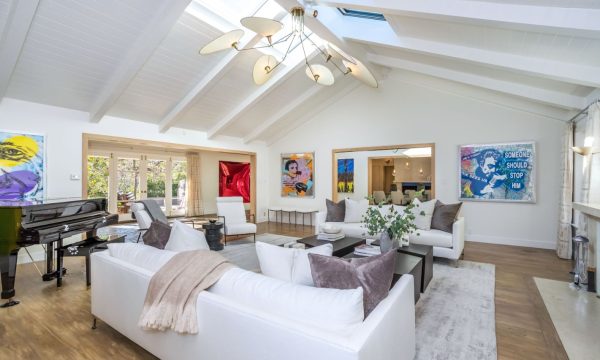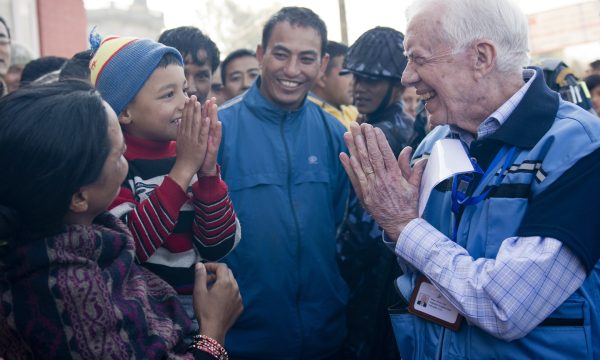The Metropolitan Museum of Art announced today The Costume Institute’s spring 2025 exhibition, Superfine: Tailoring Black Style, on view at The Met Fifth Avenue from May 10 through October 26, 2025. Inspired by Monica L. Miller’s 2009 book, Slaves to Fashion: Black Dandyism and the Styling of Black Diasporic Identity, the exhibition will present a cultural and historical examination of the Black dandy, from the figure’s emergence in Enlightenment Europe during the 18th century to 21st-century incarnations in the cosmopolitan cities of London, New York, and Paris.
To mark the exhibition opening, Colman Domingo, Lewis Hamilton, A$AP Rocky, Pharrell Williams and Anna Wintour will co-chair The Costume Institute Benefit (also known as The Met Gala®) on May 5, 2025, with honorary chair LeBron James. Additionally, chef Kwame Onwuachi will create the menu for the evening and artist Cy Gavin will design the décor concept alongside Derek McLane and Raúl Àvila. The annual event provides the department with its primary source of annual funding for exhibitions, publications, acquisitions, operations, and capital improvements.
The exhibition and benefit are made possible by Louis Vuitton.
Major funding is provided by Instagram, the Hobson/Lucas Family Foundation, Dr. Precious Moloi-Motsepe and Africa Fashion International, and The Perry Foundation.
Additional support is provided by Condé Nast.
“The Costume Institute’s spring 2025 exhibition will explore—with remarkable scale and breadth—the importance of sartorial style to the formation of Black identities in the Atlan-tic diaspora,” said Max Hollein, The Met’s Marina Kellen French Director and Chief Executive Officer. “Through a diverse range of media, this groundbreaking presentation will also celebrate the power of style as a democratic tool for rejecting stereotypes and accessing new possibilities.”
Monica L. Miller, Guest Curator, added: “Fashion and dress have been used in a contest of power and aesthetics for Black people from the time of enslavement to the present, and dandyism has long served as a vehicle through which one can manipulate the relationship between clothing, identity, and power. The history of Black dandyism illustrates how Black people have transformed from being enslaved and stylized as luxury items, acquired like any other signifier of wealth and status, to autonomous, self-fashioning individuals who are global trendsetters. This exhibition will explore concepts that define Black dandyism specifically and uncover elements of productive tension that appear when considering the figure—such as ownership, authority and self-possession, ease, exaggeration, freedom, transgression, dissonance, and spectacularity. It will also highlight the aesthetic playfulness that the dandy engenders and the ways in which sartorial experimentation gestures at both assimilation and distinction—all while telling a story about self and society.”
Andrew Bolton, Curator in Charge, The Costume Institute, commented: “Over the last few years, menswear has undergone somewhat of a Renaissance. At the vanguard of this revitalization is a group of extremely talented Black designers who are constantly challenging normative categories of identity. While their styles are both singular and distinctive, what unites them is a reliance on various tropes that are rooted in the tradition of dandyism, and specifically Black dandyism. It was this observation that led me to research the Black dandy’s origins and, ultimately, to Monica’s pioneering work on the subject. In her role as guest curator, Monica visualizes the history of Black dandyism through a wide range of objects and invites us to explore the figure of the Black dandy as much as an idea as an identity.”
According to the Oxford English Dictionary, a dandy is defined as “one who studies above everything to dress elegantly and fashionably.” Dandyism was initially imposed on Black men in 18th-century Europe as the Atlantic slave trade and an emerging culture of ostentatious consumerism created a trend in fashionably dressed or dandified servants. Both free and enslaved Black people quickly came to understand the power of clothing and style in signaling hierarchies of race, class, and gender. Over time, dandyism afforded these men and women, and later African Americans and Afro-Europeans, an opportunity to employ not only clothing but also gesture, irony, and wit to transform their given identities and posit new ways of embodying political and social possibilities in the Black Atlantic world.
Through the stories of stylish Black individuals across art, literature, music, and society, the exhibition will be organized around a series of characteristics that portray Black dandyism as an evolving sartorial mode—a group of concepts that describe a Black dandy but are not definitive. These characteristics—such as ownership, presence, ease, and cosmopolitan-ism—will also tell the Black dandy’s story over time. Representations of Black dandyism as both an aesthetic and a political construct will be exemplified through a range of media, such as garments and accessories, drawings and prints, and paintings, photographs, film excerpts, and more. These representations will explore the importance of sartorial style to the formation of Black identities in the Atlantic diaspora. Taken together, these narratives offer a history and description of Black dandyism as a discrete phenomenon that reflects broader issues of power and race relations in the Black diaspora.
Superfine: Tailoring Black Style will feature historical garments and accessories as well as contemporary garments by designers working in both the United States and Europe. The exhibition will also present drawings and prints, decorative arts, ephemera, paintings, photographs, and film excerpts by individuals whose work has been instrumental to the formation and understanding of Black identities and experiences from the 18th century to to-day.
Join the conversation about the exhibition and Gala on social media: #SuperfineStyle, #CostumeInstitute, @MetCostumeInstitute, and #MetGala.














